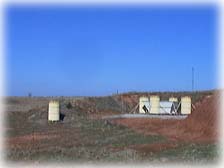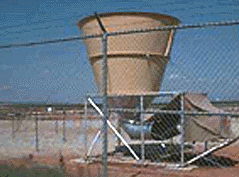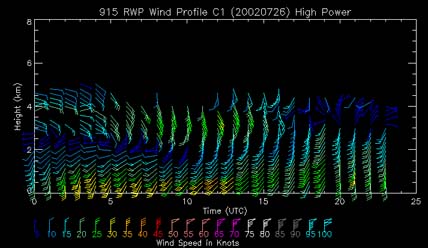
|
Tools of the Atmospheric Scientist Lesson #7 - Measuring Wind Profiles |
|
|
|
Target Level - Middle School/Junior High
|
Activity - Measuring Wind Profiles |
|
1. Go to the ARM SGP RWP site and select a date from the current or previous month. 2. Data plots are displayed for both high power and lower power. How do they differ? 3. Use the left vertical scale to estimate the maximum height of wind speed and direction detected by the instrument. 4. What was the wind speed at that height? What was the wind direction at that height? |
|
Interpreting the Data |
|
1. Go to the ARM SGP MMCR site and select a date on which strong reflective signals can see seen in the data plots. 2. Now go to the ARM SGP RWP site and select the same date. 3. The passing of a front can often trigger storms, an increase in upper level wind speeds, and a change in wind direction. Can you find evidence of this in the RWP data plot? Congratulations! You have taken another step in understanding how meteorologists use atmospheric data to help monitor and forecast the weather. |
|
National Science Education Standards Annotated by MCREL (Standard -
Level - Benchmark) |
|
Standard 1. Understands atmospheric processes and the water cycle: 1-III-1, 1-III-2, 1-III-4, 1-III-6 Standard 9. Understands the sources and properties of energy: 9-III-8, 9-III-9 Standard 10. Understands forces and motion. 10-III-3, 10-III-4, Standard 11. Understands the nature of scientific knowledge: 11-III-2 Standard 12. Understands the nature of scientific inquiry: 12-III-1, 12-III-5, 12-III-6, 12-III-7 Standard 13. Understands the scientific enterprise: 13-III-3 |
Return to Tools of the Atmospheric Scientist



